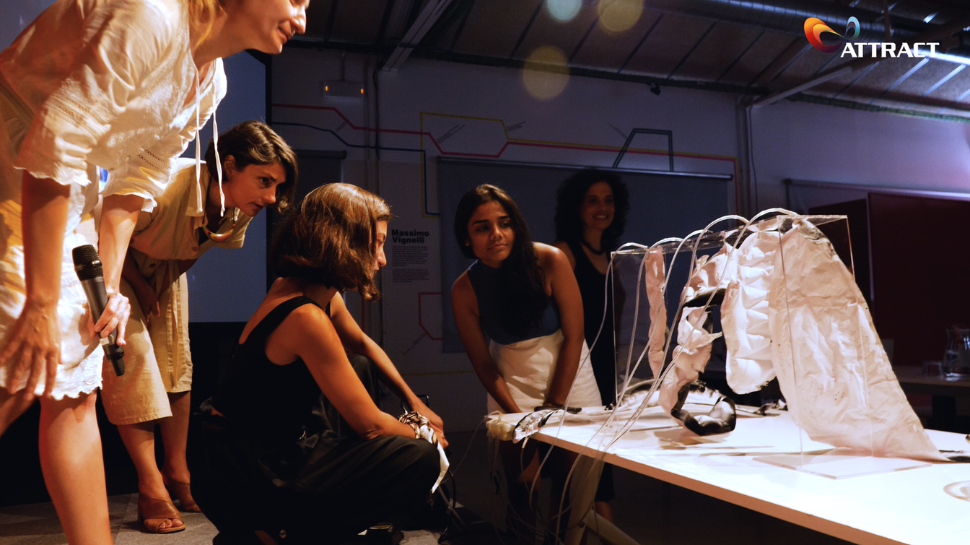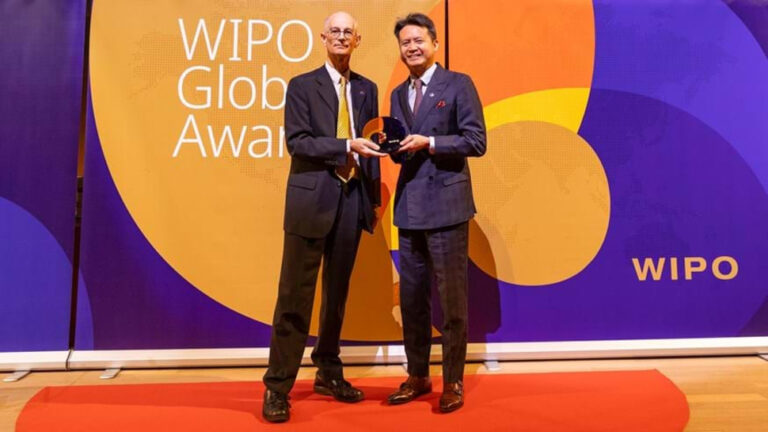The fashion industry is constantly reinventing itself and generating new trends. And like many other industries, is on its way to contributing to a more sustainable world. In that sense, the program Future Technologies for Sustainable Fashion (FTSF) focuses on Fashion Technology with a critical approach under the spectrum of sustainability, future scarcity, and space habitation.
Throughout this program, students work in multidisciplinary teams to respond to societal needs through a hands-on approach, using digital manufacturing, first-person perspective methodology, multiverse thinking, and embodied design ideation methods.
FTSF brings together students from the Istituto Europeo di Design (IED) and the Institute for Advanced Architecture of Catalonia (IAAC) who have to use some of the ATTRACT technologies to respond to societal needs by using agile manufacturing technologies, new materials, and wearable computing.
Get to know more about the FTSF program through this interview with a teacher and a student that participated in the first round of this program:
Anastasia Pistofidou
Co-founder of the postgraduate program Fabricademy, Textile and Technology Academy.
Which university and courses are part of your consortium and what brings you all together?
I am part of the Institute of Advanced Architecture of Catalonia (IAAC) where I direct the Fabricademy postgraduate. And we joined forces with the IED Institute for the “Future Technologies for Sustainable Fashion” program that envisions and brings a glimpse of the future of how production, manufacturing, and materials will be for the textile and clothing industry.
How do you think society will benefit from this project?
We envisioned and make a fast forward into the future of how we imagine sustainable fashion and production using the latest technologies that are given from the opportunity to collaborate with CERN and the ATTRACT Academy. I think that this is a breakthrough because we put creativity together with science and it is like opening access to science to the people.
How do you envision participating in this project will contribute to your personal and professional development?
What I loved about ATTRACT Academy was the fact that we were able to be at CERN, which is kind of like the European NASA, and collaborate with scientists, and at the same time collaborate with the different schools. So, I think that the most important factor is that we can bring different expertise to make innovation happen.
Thomas Valenti
Student in the Master’s for Sustainable Fashion Technology at IED Barcelona.
How do you find working with the R&D&I projects?
Working with the R&D&I projects over at CERN was nothing but inspiring. We only got a theoretical knowledge of the technology we were exposed to in their facilities for prototyping and researching. And in two days, we were able to build hands-on and ask their physicists in order to progress our projects further.
How do you think society will benefit from this project?
It was a speculative design project and the problem my group imagined is that with climate change, the DNA was mutating in the population of the world so that now more than 50% of people are affected by Eczema, which is a skin condition where your skin dries out and remains very irritated. There is no cure, but there are skin treatments. Our solution was to crystallize clothing in dead sea salt, which is high in nutrients that can treat Eczema so that the very fashion and clothing that you wear doubles as a skin therapy treatment for your skin condition.
How do you envision participating in this project will contribute to your personal and professional development?
Now I have a new scope on the problems as a designer that I want to tackle. This project really framed design within how can we solve society’s needs. We worked with scientists, physicists, amongst other designers. We collaborated between two schools. I think it has really enhanced; it raised my standards for the type of collaboration I want to see in whatever professional workspace I end up in.
For more information
Visit the FTSF program site.


